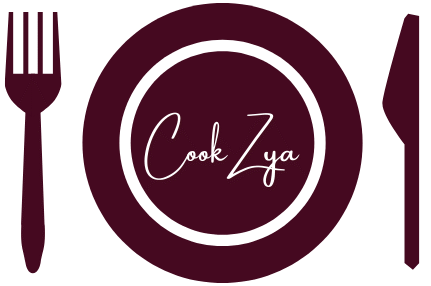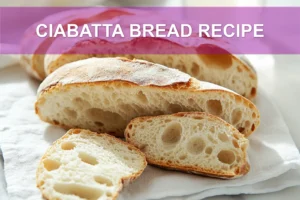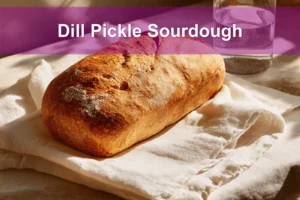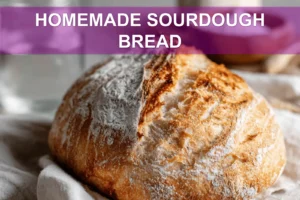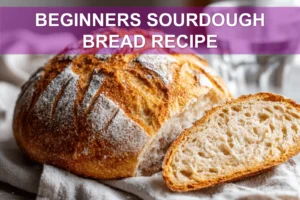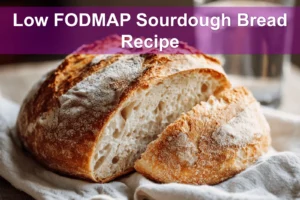Flour on my elbows. A doughy blob stuck to the dish towel. Welcome to my first dance with Italian Ciabatta Bread Paul Hollywood. This recipe’s buzzing thanks to, yep, the British Baking Show recipes crowd getting nostalgic. Rustic. Chewy. Totally worth the mess.
This ciabatta is all golden crust and irregular holes inside thanks to strong bread flour, olive oil, and a slow, bubbly rise. Think bakery smell in your kitchen, minus the frilly apron. It’s pantry-friendly and practically begging for butter. Full details in the blog!
I grew up thinking “crusty bread” meant the supermarket loaf in a bag. Then I got my hands in a wet, floppy dough that felt all wrong but baked up just right. I tested it. You’ll love the secret (hint: it’s not flour power, it’s patience).
Why You’ll Love This Recipe
This Italian Ciabatta Bread Paul Hollywood recipe is everything a cozy kitchen experience should be. Here’s why it’s a keeper:
- Rustic and Nostalgic: The golden crust and soft, holey interior take you straight to an Italian bakery.
- Beginner-Friendly: Despite its fancy look, the steps are simple and forgiving. Paul Hollywood’s instructions make it approachable.
- Pantry Basics: Made with just a few kitchen staplesno exotic ingredients or tools required.
- Versatile: Perfect with soup, sandwiches, or just slathered in butter. Bonus points for being freezer-friendly!
Key Ingredients and Substitutes
Here’s a quick snapshot of the ingredients you’ll need to craft your freshly baked ciabatta bread loaves:
| Ingredient | Role | Substitution |
|---|---|---|
| Strong white bread flour | Gives structure and chew | All-purpose flour works, but expect a softer texture |
| Fine sea salt | Balances flavor | Table salt is fine, but reduce by 1/4 tsp |
| Instant yeast | Leavening and rise | Active dry yeast (increase proofing time) |
| Olive oil | Acts as a tenderizer | Another neutral oil, but olive is ideal for flavor |
| Semolina | Optional for texture and dusting | Skip it or use more flour |

Step-by-Step: How to Make Ciabatta Bread
Let me walk you through how this magical, rustic Italian ciabatta loaf comes together without feeling overwhelming. It’s messy (in the best way), but trust me, worth it:
- Get that dough going: Mix the flour, salt, yeast, olive oil, and most of the water in a mixer. Slowly add the rest of the water as it comes together. Mix until stretchy and smooth (around 5-8 minutes).
- Let it rise: Transfer the wet, sticky dough into a lightly oiled square container. This helps with shape. Cover it up and leave it to doubleor triplein size for 1-2 hours.
- Shape with care: Dust your surface heavily (more flour = less sticking). Gently tip out the dough, keeping air bubbles intact. Stretch, cut into four pieces, and transfer to lined trays.
- Rest again (patience pays off): Let those dough pieces relax for 10 minutes while you preheat your oven to 220°C (425°F).
- Bake to perfection: Bake for about 25 minutes until golden and hollow-sounding. Cool on a rackor sneak a slice while it’s warm. You deserve it!
Quick Timing Overview
| Step | Time Estimate |
|---|---|
| Mixing | 10 minutes |
| First rise | 1-2 hours |
| Shaping | 10 minutes |
| Resting (post-shaping) | 10 minutes |
| Baking | 25 minutes |
Troubleshooting and Pro Tips
This ciabatta dough is notorious for being wet, but don’t sweat it. Here’s how to avoid common pitfalls:
- Dough too sticky? That’s normal! Use floured hands and a heavily dusted surface when shaping.
- Flat loaves: If your loaves spread too much while resting, your dough might be over-proofed or handled too roughly. Be gentle!
- Not enough bubbles: Make sure to mix until the dough is fully stretchy, and don’t skip the long riseit’s key for the signature holes.
Pro Tip: Use a square container for proofing. It keeps the dough easier to shape later on!
Serving and Storage
Here’s how to enjoy and save your rustic Italian ciabatta bread:
- Eating: Best warm and fresh! Pair with soup, pasta, or olive oil and balsamic vinegar for dipping.
- Storing: Wrap cooled loaves in a clean kitchen towel and store at room temperature for 1-2 days.
- Freezing: Slice and freeze in airtight bags. Thaw and toast to bring back that “freshly baked” vibe.
| Storage Method | Duration |
|---|---|
| Room Temperature | 1-2 days |
| Freezer | Up to 3 months |
Expert Insight: Mastering Italian Ciabatta Bread Paul Hollywood Style
Paul Hollywood’s approach to Italian ciabatta emphasizes a high-hydration dough and gentle handling to create the bread’s signature open crumb and crisp crust. Achieving the right fermentation and baking technique is key to capturing the authentic texture and flavor that make this ciabatta truly exceptional.
For more delicious recipes and cooking inspiration, follow me on Facebook, Pinterest and Reddit!
Mastering Italian Ciabatta Bread Paul Hollywood Style
After several messy attempts that left my kitchen flour-covered and my dough too sticky or too tough, I finally nailed this Italian Ciabatta Bread Paul Hollywood-inspired recipe. Each trial helped me understand the perfect hydration and folding technique, turning frustration into a crusty, airy loaf that’s become a family favorite.
FAQs ( Italian Ciabatta Bread Paul Hollywood Recipe )
What makes Paul Hollywood’s ciabatta recipe different from other recipes?
Paul Hollywood’s ciabatta recipe stands out due to his emphasis on high hydration dough and extended fermentation techniques featured on the British Baking Show. His method creates the signature open crumb structure and chewy texture that defines authentic rustic Italian ciabatta loaf. The recipe focuses on proper gluten development through gentle folding rather than aggressive kneading. Paul also emphasizes the importance of using strong bread flour and achieving the right dough consistency for optimal results.
How long does Paul Hollywood’s ciabatta take to make from start to finish?
Paul Hollywood’s ciabatta bread recipe typically takes about 24 hours from start to finish, including preparation and rising times. The initial mixing and first rise take approximately 2-3 hours, followed by an overnight cold fermentation in the refrigerator for 12-18 hours. The final shaping, proofing, and baking process adds another 2-3 hours to complete these freshly baked ciabatta bread loaves. This extended timeline allows for maximum flavor development and the characteristic airy texture.
What type of flour does Paul Hollywood recommend for ciabatta bread?
Paul Hollywood recommends using strong white bread flour with a protein content of at least 12-14% for his ciabatta bread recipe. This high-protein flour provides the gluten strength necessary to support the high hydration dough and create the open crumb structure. Some bakers also incorporate a small percentage of Italian “00” flour for added authenticity, though strong bread flour alone produces excellent results. The quality of flour significantly impacts the final texture and flavor of your Paul Hollywood bread.
Can you make a sourdough version of Paul Hollywood’s ciabatta?
Yes, you can adapt Paul Hollywood’s ciabatta recipe to create sourdough ciabatta bread slices by substituting part of the commercial yeast with active sourdough starter. Replace about 100-150g of flour and water with the same amount of active starter, and reduce the commercial yeast by half. The fermentation time will be longer, typically 6-8 hours for bulk fermentation, but the result is incredibly flavorful. This combination gives you the best of both Paul Hollywood recipes and traditional sourdough techniques.
What are the most common mistakes to avoid when making Paul Hollywood’s ciabatta?
The most common mistakes include adding too much flour during handling, which destroys the wet dough consistency essential for ciabatta. Over-kneading the dough is another frequent error – Paul Hollywood emphasizes gentle folding instead of aggressive mixing. Many home bakers also skip the overnight fermentation, missing out on flavor development and proper texture. Finally, handling the dough too roughly during shaping can deflate the carefully developed gas bubbles that create the characteristic open crumb structure.

Wrapping Up Your Homemade Italian Ciabatta Bread
Italian Ciabatta Bread Paul Hollywood comes together in just a couple of hours, delivering that perfect rustic crust and airy crumb you dream of. You’ll love how forgiving the dough feelsno fancy gadgets, just simple ingredients and a bit of patience. It’s a cozy kitchen win that’ll have your whole family asking for more!
Want to mix it up? Try adding herbs or swapping olive oil for a buttery touch. Slice extra loaves and freeze themtoast for fresh-baked vibes anytime. A pro baker once told me: patience is the real secret here, and trust me, it’s worth every minute.
Did this rustic Italian ciabatta loaf remind you of a kitchen adventure from your past? Snap a pic or share your tweaks belowI’d love to hear how it turned out. Pass the warmth along; this Paul Hollywood bread recipe is a keeper for cozy, homemade moments.
Print
ITALIAN CIABATTA BREAD PAUL HOLLYWOOD
- Total Time: 2 hrs 25 mins
- Yield: Serves 4 loaves 1x
- Diet: Vegetarian
Description
This Italian Ciabatta Bread recipe by Paul Hollywood offers a simple and delicious way to bake rustic loaves at home. Perfect for bread lovers, it’s inspired by British Baking Show Recipes and is great for fresh sandwiches or alongside meals. Enjoy the crusty outside and soft interior in every bite.
Ingredients
- 500 g (4 cups) strong white bread flour plus extra for dusting
- 10 g (0.35 oz) fine sea salt
- 10 g (0.35 oz) instant yeast
- 40 ml (1.35 floz) olive oil
- 400 ml (1.69 cups) tepid water
- Fine semolina for dusting optional
Instructions
- Lightly oil a 2-3 litre square plastic container. It’s important to use a square tub here to help shape the dough.
- Tip the flour in the bowl of the mixer and add the salt to one side and the yeast to the other side, so they’re not close. Add the olive oil and ¾ of the water and begin mixing on a slow speed with the dough hook attachment. As the dough starts to come together, slowly add the remaining water. Then mix for a further 5-8 minutes on a medium speed until the dough is smooth and stretchy.
- Tip out the dough into the prepared tub and spread it so it reaches all sides and corners. Cover with a tea towel or reusable plastic wrap and leave somewhere warm until it has doubled or even trebled in size, 1-2 hours or longer.
- Once the dough has doubled or tripled in size, pre-heat your oven to 220C. Line two baking trays with baking parchment or silicone paper. If using baking paper, dust with lots of the strong flour.
- Dust your work surface heavily with more of the flour and add some semolina too, if you have it. Carefully tip out the dough (it’s pretty wet) onto the work surface. There is no need for knocking back, handle the dough gently so you keep as much air in it as possible.
- Coat the top of the dough with more flour and/or semolina. Cut the dough in half length ways and divide each of those in half length ways also. You should now have four long pieces of dough.
- Stretch each piece a bit length ways and place on the prepared baking trays. Leave the dough to rest uncovered for 10 minutes.
- Bake for 25 minutes or until the loaves are golden brown and sound hollow when tapped. Cool on a wire rack. Do try and eat some whilst still warm though.
Notes
- See Tips 1, 2, and 3 in original instructions for best results
- Use a square container to help shape the dough properly
- Prep Time: 2 hrs
- Cook Time: 25 mins
- Category: Bread
- Method: Baked
- Cuisine: Italian
Nutrition
- Serving Size: 1 loaf
- Calories: 552 kcal
- Sugar: 1 g
- Sodium: 978 mg
- Fat: 11 g
- Saturated Fat: 2 g
- Carbohydrates: 96 g
- Fiber: 4 g
- Protein: 14 g
